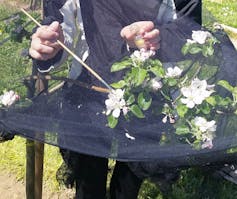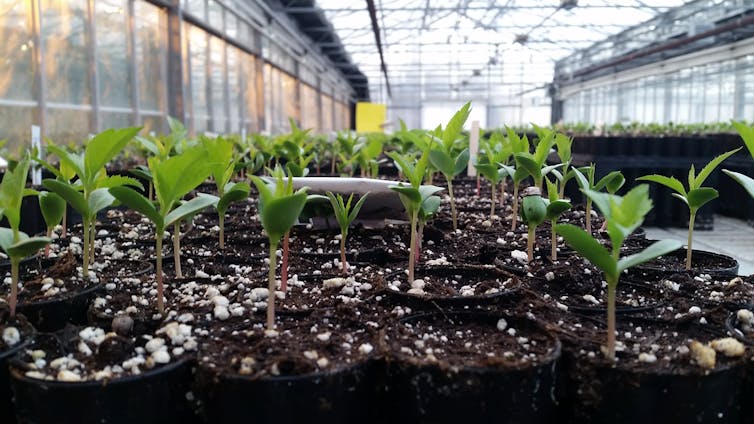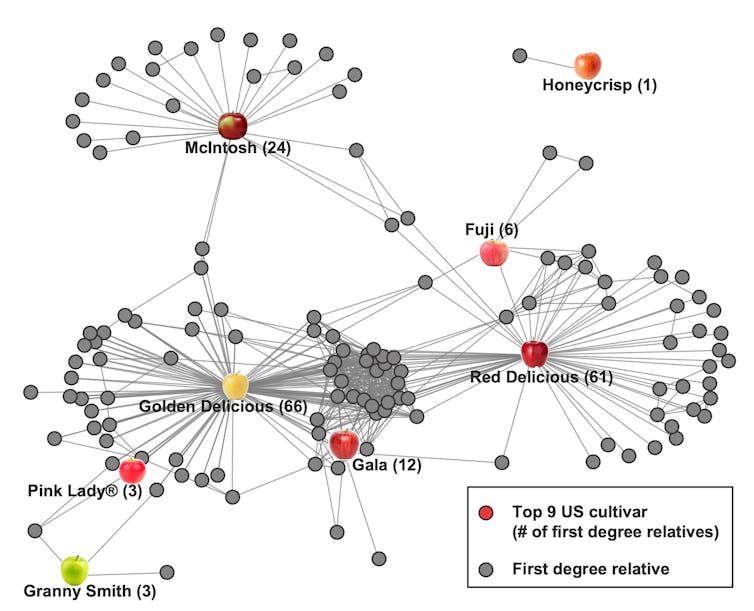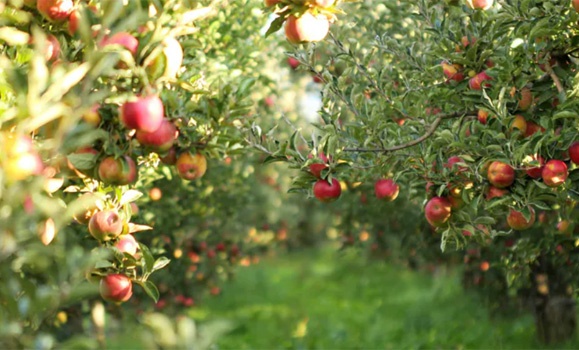Zoë Migicovsky is a postdoctoral fellow in the Faculty of Agriculture at Dalhousie University.
You take a bite out of your midday apple and it’s just perfect: the right amount of crunch, juice, sweet and sour. You imagine saving its hard brown seeds and planting them in the ground. One day you’ll have a whole tree producing apples just like this one. Or will you?
There’s no reason you can’t plant a seed from your delicious Honeycrisp apple from the grocery store — but the fruit that comes from that tree will not be Honeycrisp apples.
Golden Delicious, Red Delicious, Granny Smith and McIntosh are some of the most widely eaten apples in the world, but they were all discovered more than 100 years ago. As the climate changes, pests and diseases attack trees and fruit, and consumer tastes shift, apple breeding could benefit from harnessing the immense amount of genetic diversity that is available. But only if breeders are willing to take a risk and create new varieties using less familiar apples.
An orchard of clones
Apples, like other fruiting plants, start with flowers. The flowers on an apple tree require pollen from another tree in order to set fruit. That fruit will look like the tree it is growing on, but the seeds inside of it now contain two copies of DNA in each cell, one from the tree it grew on and one from the tree the pollen came from.
Crabapple trees are sometimes planted among cultivated apples in commercial orchards to provide pollen. If the apple you picked off a grocery store shelf wasn’t pollinated by a crabapple tree, it could have been pollinated by another apple variety. So, if you plant an apple seed, you might get something really delicious and tasty, which is exactly what apple breeders aim for when they make targeted crosses between two apple trees. But most likely you will not.

The odds of getting something delicious aren’t great even when you know who the two parents are. One German apple breeding program started with 52,000 seeds and it was only after 26 years that it finally released three new apple varieties.
If we can’t plant their seeds, how is it possible to grow more Granny Smith apple trees? The secret is clonal propagation.
Clonal propagation involves taking a cutting of wood that includes a bud from a desirable tree to grow a new tree, called a clone. Any apple orchard composed of one variety, like Gala, Granny Smith or Honeycrisp, is actually an orchard of clones.

Clonal propagation is so successful that more than 75 per cent of perennial fruit crops are grown this way. But this means that only a handful of apple varieties are grown worldwide.
For example, according to Canadian Apple Storage Reports, Canada’s top four apple varieties (McIntosh, Ambrosia, Honeycrisp and Gala) were responsible for over 50 per cent of apple production, based on weight, for the 2020-21 crop year.
Closely related
In a recent study, my colleagues and I looked at one of the most diverse collections of apples in the world, located in Geneva, N.Y. This living collection contains thousands of apple trees, including both the domesticated apple we eat and its wild relatives.
Apple varieties have to be preserved in living collections because they are clonally propagated and not grown from seed, so collections like the one in Geneva are critical to conserving and maintaining apple diversity.
Our research found that some of the most popular apples are often used in apple breeding, with both Red Delicious and Golden Delicious having over 60 putative first-degree relatives (parent, sibling, offspring) in the collection.
Sometimes using a commercially successful parent works well. For example, Gala is the offspring of Golden Delicious, and Red Delicious is one of its grandparents.
In our study, we found seven of the top eight apple varieties in the United States were interconnected by a series of first-degree relationships.

The only exception was Honeycrisp, an apple variety with a unique and crisp texture. Honeycrisp’s parents were commercially unsuccessful: Keepsake and a University of Minnesota selection called MN1627, which is no longer available and not in the apple collection we studied. However, if it were, Honeycrisp would be linked to the remaining top apples because one of the parents of MN1627 was Golden Delicious.
Missed apple-tunities
By using the same handful of parents repeatedly in apple breeding, we are missing out on a lot of the unusual and wonderful variation that is out there. Commercial orchards have the same apple variety planted side by side. But our research orchard in Kentville, N.S., has more than 1,000 unique apple trees. Walking among these trees in the fall, you can see, smell and taste the possibilities.
All the Honeycrisps in the world can be traced back to one single tree. Plant diversity is the foundation of crop improvement, and by expanding the breeding pool, apple breeders can introduce new traits for consumers and improve crop resilience in response to a changing climate.
Apple breeding is about taking two parents, dusting the pollen from one tree onto the flower of another and creating something brand new. This is the same process that happens (with the help of bees) to the trees that grow the apples you buy at the grocery store. So if you were to plant a seed from one of them in your garden? Well, who knows how far the apple would fall from the tree.![]()
This article is republished from The Conversation under a Creative Commons license. Read the original article.

